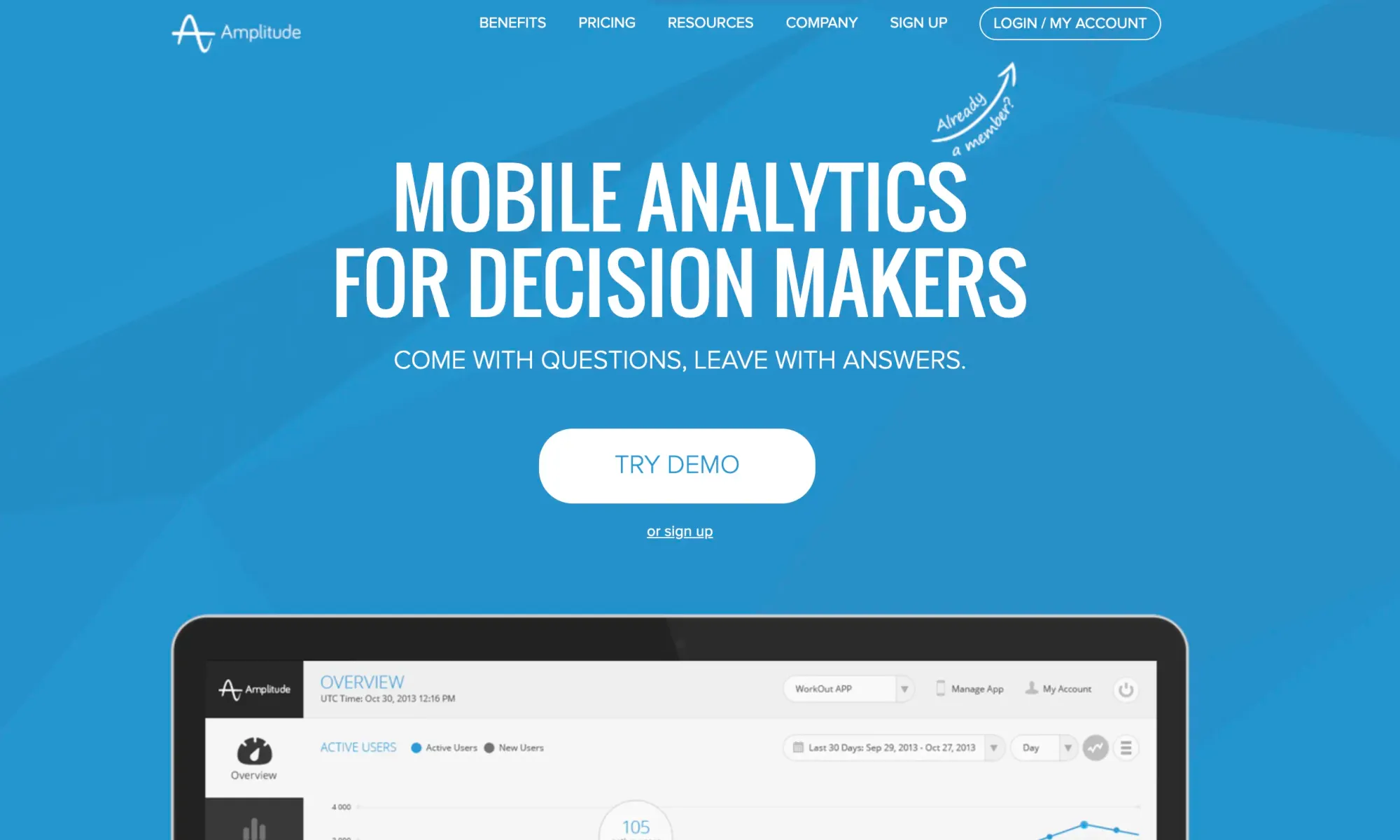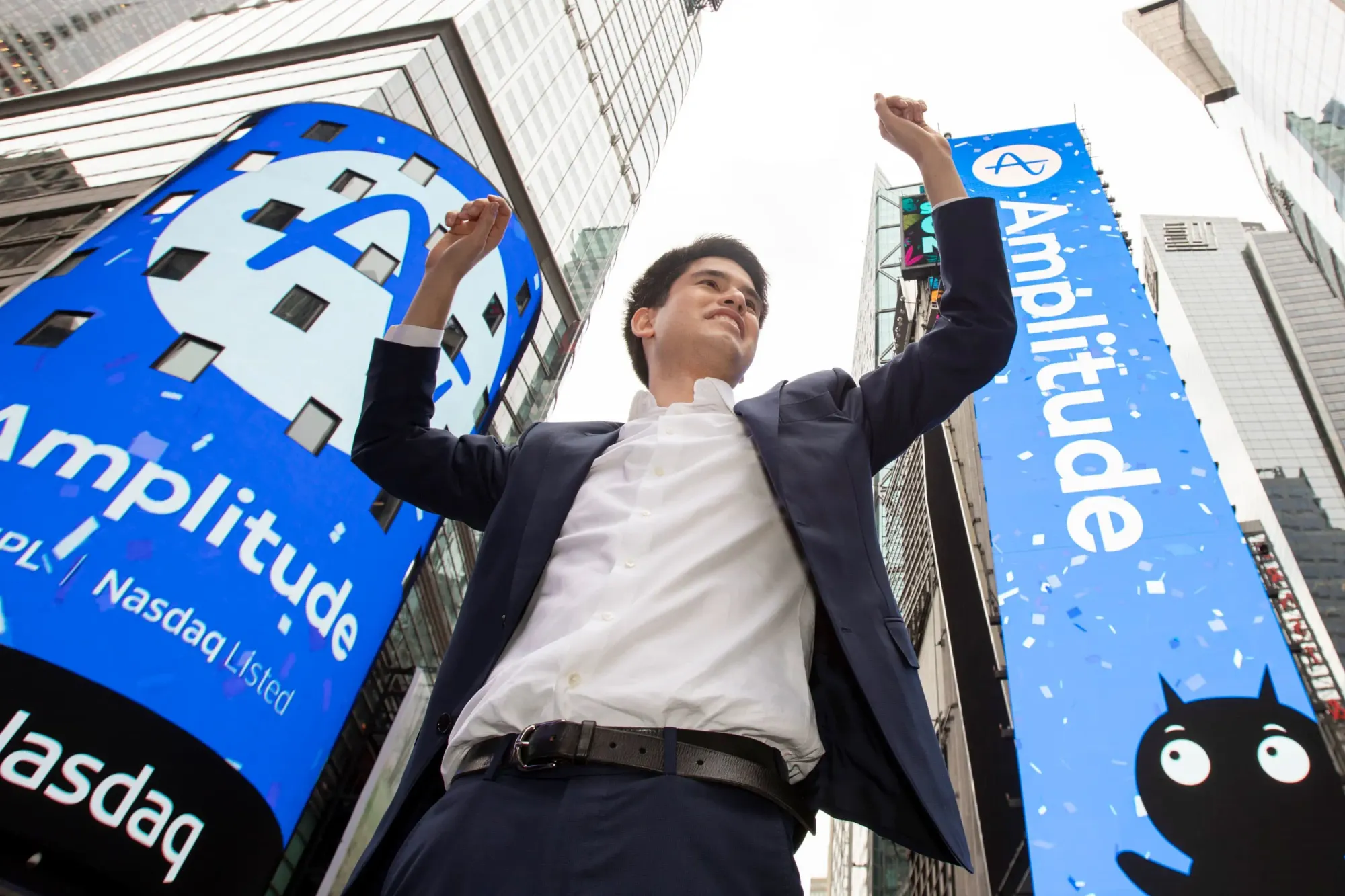Amplitude’s success story of going from Y Combinator (W12) to going public (2021) makes it hard to believe it started as a feature in a mobile app.
If you’re as obsessed with studying successful SaaS companies as we are, you know that’s a common story: Founders build a feature for a struggling product, realize the feature could be valuable on its own - and build a home run of a company.
That’s exactly what happened with Amplitude. Their path to Unicorndom and loyal customers (they work with 25% of the Fortune 100) was not clear.
Sonalight - the original Amplitude?
Before Amplitude, there was Sonalight - a company that made “Text by Voice”, which enabled users to interact with their phones hands free, like Siri before Siri. Founders Spenser Skates and Curtis Liu knew each other from college and had gotten rejected from YC for a TaskRabbit/Fiverr adjacent idea.
At the time, mobile was the “next big thing” (like AI is now) and built Sonalight. Going from hands-free mobile app to analytics might sound far-fetched. But after Skates and Liu had graduated YC and raised a seed round, they realized their app was too early. While they had great traction from the users they could reach, they lacked widespread adoption.

They knew this because they had built an internal analytics tool that showed them exactly how users used their app - something no publicly available analytics tool could do. Whenever they showed this to their YC batchmates, their eyes lit up - mobile app analytics was missing from the space.
Knowing what we know now, there’s a clear lesson about product-market fit, even at the earliest stages: If people see something and tell you “I want that, how can I get it?” That's a great sign.
Pivoting is scary (trust us, we’ve done it). There’s some stigma in raising money and then changing your idea instead of making it work. Pivoting can either go really wrong or really right. Fortunately for Skates and Liu, their seed investors were willing to play ball.
How Amplitude sold their product before building it
After coming out of stealth in 2014, Skates and Liu were able to raise again and move forward with their mobile analytics platform Amplitude.

There’s a great founder lesson here: It wasn’t that Sonalight wasn’t working. But the founders realized it wouldn’t be giant. While tenacity is a great trait, so is seeing things clearly and not getting too attached to your ideas when they’re not working as well as you thought they would.
Amplitude’s founders then took the sage advice to early-stage founders: They talked to potential customers.
This enabled the founders to build what customers needed, not what they thought customers needed. Instead of wasting time and money building a product that might not take off, they brought mocks and ideas to meetings with potential customers. They knew a product like Amplitude was valuable, but wanted to figure out what bits and pieces made the most sense to build out at the outset.
That’s another takeaway from Amplitude’s journey: You don’t need to have a product to go to speak to people who might buy it. You can build it once you’ve validated the need.
By avoiding building a product before validating it, the Amplitude team avoided creating something that was just okay. They circumvented the minimum in minimum viable product and created something that was usable at the outset.
In an interview with CNBC, Skates said that the idea of striving towards the best idea possible laid the groundwork for creating a successful business. For them, the priority of creating something great outweighed a sense of urgency to market a barely usable product.
This might sound like perfectionism, but it’s important to note that the team had already validated the need in the Sonalight days and gotten buy-in from potential customers.
Skates, Liu, and their additional co-founder Jeffrey Wang had nailed the sweet spot between creating something people wanted to use and could use.
This also had an additional benefit: They avoided the common trap of prioritizing quick growth over sustainable growth, which haunted companies like Uber and Lyft as they grew.
Striving towards perfection could cripple a team, make the work environment stressful and keep goalposts moving. As the product grew from mobile to overall product analytics, so did the company.
From success to going public
As you start to hire people, culture becomes more important. The Amplitude founders established core values of growth mindset, humility, and ownership to keep their team level-headed and able to fail instead of sweeping things under the rug (cough, cough, Elizabeth Holmes). CTO Liu made an important distinction: Amplitude became about growing a company rather than a product - a lesson he learned from Sonalight, which was a great product, but not a great company.

Early success carried Amplitude through the market tribulations between their 2014 launch and their 2021 direct listing. Both Battery Ventures (from Series B) and Benchmark (from Series A) followed on as investors for nearly every round.
But Amplitude’s path to direct lising wasn’t all sunshine and daisies: Amplitude grew rapidly, but hit a sink or swim moment when revenue dropped as a result of a cutdown in spending in the early pandemic. But by fall of 2020, SaaS customers were back to investing into products, which boosted Amplitude’s revenue nearly 50% and covered early pandemic setbacks - and enabled their direct listing. After ringing the bell, Amplitude saw a 50% bump in listing price to match their growth in 2020 and 2021.
Going public is like beating the final boss in a video game, but Amplitude continues to grow. This makes me think Amplitude has found the sweet spot between building a great product (which can lead to perfectionism) and building quickly to not waste resources.
The economy is different than during Amplitude’s rise: Money is harder to come by (for both startups and VCs). Acquisitions are scarce and IPOs even rarer. This makes building great products even more important. As Amplitude shows, it’s important to focus on what people actually want - and build it for them.

















